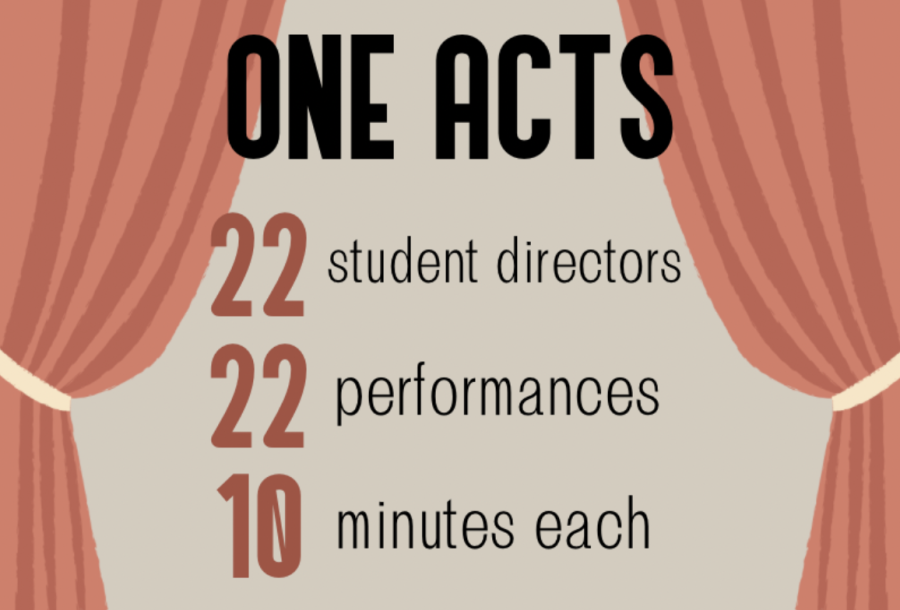One-Acts gives seniors exclusive directing opportunity
The 22 one-act plays utilize casts of two to four Staples Players, telling short 10-minute stories to the Black Box theater audience from April 22-23.
There have now been 24 shows put on by Staples Players this year. Two of them might be recognizable – “Guys and Dolls” in November and “Twelfth Night” in March – but the other 22, all of which were performed in one weekend, may not be as well-known.
The 21st Annual One Act Play Festival hosted 22 10-minute plays directed by Staples seniors on the weekend of April 22-23. The senior directors had taken the Theater 3: Directing class to prepare for these mini-performances, which they had chosen and directed themselves featuring Staples Players members as actors.
“It’s really cool to use our skills that we learned in class and apply it to this and put something up for all the students,” director Isabelle Ormsby ’23 said.
The seniors have been preparing since December when they began to choose the play they’d be directing. The shows were cast during final rehearsals for the Players’ last main stage show, “Twelfth Night,” in March, and started rehearsing soon after its last performance.
“The ability to search and find for anything that you feel […] would mold your directing style is definitely a really cool process,” director Max Ardrey ’23 said.
Isabelle Ormsby ’23
It’s really cool to use our skills that we learned in class and apply it to this and put something up for all the students,
— Isabelle Ormsby ’23
Many of the directors shared how the new experience was a great opportunity to learn about the intricacies of directing that couldn’t be directly taught in the class. Theater 3: Directing is one of two options at the end of the Staples theater track; after Theater 1 and 2, students could choose between acting and directing.
“I’ve learned a lot about what the director’s job really is,” director Nea Hochman ’23 said. “Yes, you’re supposed to tell [the actors] what to do, but you’re also supposed to create an environment where they can be creative and bring themselves to the characters.”
The actors in each show sent in an audition video to all the senior directors, who watched everyone’s videos and selected who they wanted for callbacks. The actors don’t have a personal say in which one-acts they want to be in. Each one-act has a small cast ranging from two to four people.
“Another thing one-acts offer that’s different from other Players shows is that the schedule is much more flexible,” actor Sorel Kennedy ’25 said. “Because your directors are your fellow students […] they know what it’s like to be a student.”
There’s a stage crew for the one-acts as well, led by three stage managers who help with backstage work in the black box theater, which is significantly smaller than the main Players stage.
“One-acts gives the tech underclassmen more opportunities,” stage manager Kayla Damiano ’25 wrote. “As it is used to train us in these roles when seniors leave (for example, right now I’m just a production assistant, but they are having me be a stage manager for this as training).”
The directing class curriculum starts the year by teaching students basic blocking. The class then moves on to scenes with dialogue, and then finally starts the one-act process, which is the biggest project in the year-long curriculum. The directors not only rehearse the one-acts after school but also develop them during the class period.
“If you trust your actors and trust yourself,” Ardrey said, “then it usually ends up going decently well.”

Creative Director Alex Gaines ’25 is no stranger to the newsroom. Gaines became intrigued by journalism at Ursus, where she was in awe at the complex...

Creative Director Alex Gaines ’25 is no stranger to the newsroom. Gaines became intrigued by journalism at Ursus, where she was in awe at the complex...






























































